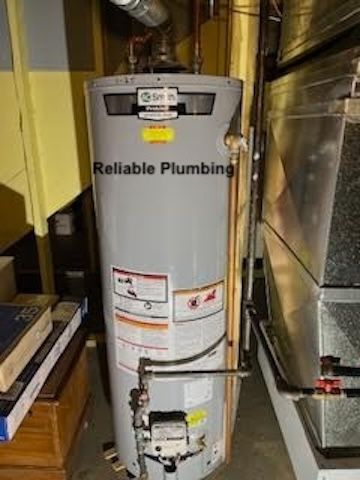Blog
Blog
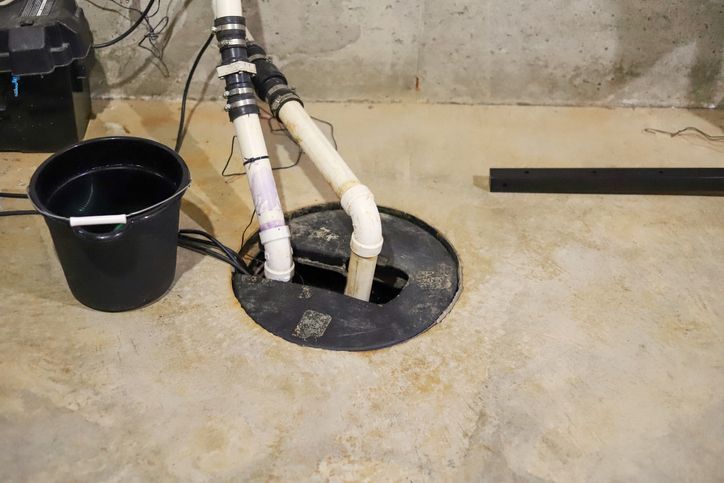
By John Gannon
•
February 18, 2025
Heavy rain can spell trouble for homeowners, especially those with basements prone to flooding. A sump pump is your first line of defense against unwanted water damage 🏡🌊. If you’re new to sump pumps or need a refresher, here’s everything you need to know about how they work, why they’re essential, and how Reliable Plumbing & Sewer Service can help keep your home in Tinley Park, Orland Park, Mokena, Oak Lawn, and surrounding areas dry! ⚡ What Is a Sump Pump? A sump pump is a device installed in a pit (sump basin) at the lowest point of your basement or crawl space. When water collects in the pit, the pump activates and moves the water away from your home, preventing flooding, mold growth, and structural damage. There are two main types: 🔄 Submersible Sump Pumps – Installed inside the sump pit and operate quietly. 🔋 Pedestal Sump Pumps – Positioned above the pit for easier maintenance but can be louder. 🌧️ Why You Need a Sump Pump If your basement is at risk of flooding, a sump pump is an essential investment. Here’s why: ✅ Prevents Water Damage – Protects floors, walls, and belongings from costly water-related repairs. ✅ Reduces Mold & Mildew – Keeps humidity levels down, reducing the risk of mold growth. ✅ Protects Your Foundation – Prevents excess water from weakening your home’s foundation. ✅ Lowers Risk of Sewer Backups – Can help keep your drainage system clear during heavy rain. 🔧 Signs You Need a Sump Pump or Replacement Not sure if you need a sump pump or if yours is due for an upgrade? Look out for these warning signs: 🌟 Frequent basement dampness or minor flooding. 💧 Water pooling near your home’s foundation. 🔋 An old or non-functioning sump pump (over 7-10 years old). 🚒 Strange noises or frequent cycling of the pump. If any of these apply to you, it’s time to call in the experts at Reliable Plumbing & Sewer Service , serving Tinley Park, Orland Park, Mokena, Oak Lawn, and surrounding areas! 🌐 Sump Pump Maintenance Tips To keep your sump pump running efficiently, follow these simple maintenance steps: 1️⃣ Test it regularly – Pour water into the pit to ensure the pump activates. 2️⃣ Clean the pump and pit – Remove debris that could clog the system. 3️⃣ Check the discharge line – Make sure water is directed away from your home. 4️⃣ Have a backup power source – A battery backup pump keeps it running during power outages. 🛠️ Need Sump Pump Installation or Repair? Call Reliable Plumbing! A properly installed sump pump can save you thousands in water damage repairs. Whether you need a new sump pump, maintenance, or emergency repairs, Reliable Plumbing & Sewer Service is here to help homeowners in Tinley Park, Orland Park, Mokena, Oak Lawn, and surrounding areas! 📞 Call us today to schedule a service and protect your home from flooding!
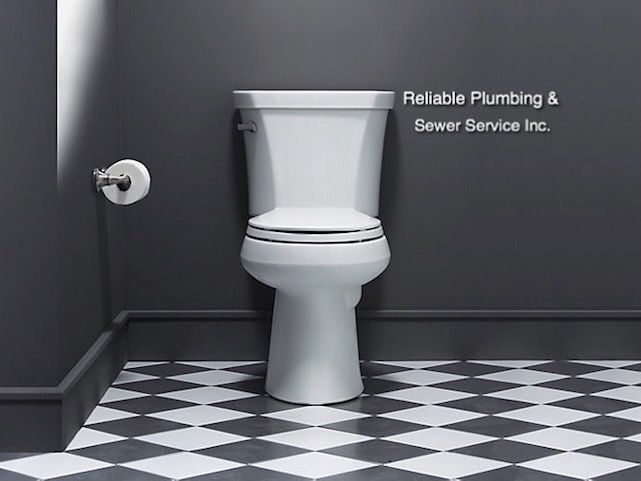
By John Gannon
•
February 11, 2025
Your toilet is one of the most used fixtures in your home 🏡, but like all plumbing components, it won’t last forever. While some issues can be repaired, there comes a time when a full toilet replacement is the best option. Here are five telltale signs that it’s time to upgrade your throne! ⚡ 1. Frequent Clogs & Overflows If your toilet is constantly clogging 🗊7 or overflowing, even with normal use, it may indicate deeper plumbing issues. Older toilets often have weaker flushing power, making frequent plunging a frustrating chore. When to Replace: If you find yourself reaching for the plunger every other day, it’s time to consider a high-efficiency toilet with better flush performance. 🎧 2. Persistent Leaks & Water Damage A leaking toilet can lead to water damage and increase your water bill 💸. Leaks may come from cracks in the porcelain or faulty internal components. When to Replace: If your toilet has visible cracks in the bowl or tank, replacing it is essential to prevent costly water damage and mold growth. ⏳ 3. Constant Running Water Does your toilet keep running long after you’ve flushed? This could indicate a worn-out flapper valve or internal mechanism 🔧. When to Replace: If replacing the flapper or other components doesn’t solve the issue, your toilet might be outdated and inefficient, wasting gallons of water daily. 🚽 4. Wobbling or Unstable Base A toilet that wobbles when you sit down is more than just an annoyance—it could indicate floor damage or a failing wax ring 🔥. When to Replace: If tightening the bolts doesn’t fix the problem or if there’s noticeable water damage around the base, a new toilet installation is likely necessary. 🌍 5. Outdated & Inefficient Model If your toilet is decades old, it’s likely using more water per flush than modern, water-efficient toilets 🌱. When to Replace: Upgrading to a low-flow or dual-flush toilet can save water, lower your bills, and improve performance without sacrificing power. 🛠️ Time for an Upgrade? Call Reliable Plumbing! If your toilet is showing any of these signs, don’t wait for a plumbing disaster! Reliable Plumbing & Sewer Service offers professional toilet installation with high-efficiency models to keep your bathroom in top shape. 📞 Call us today to schedule your toilet replacement!

By John Gannon
•
February 4, 2025
There’s nothing more frustrating than stepping into the shower only to be met with a weak trickle of water 🙄. Low water pressure can make daily tasks inconvenient and indicate underlying plumbing issues. Here’s what could be causing the problem and how Reliable Plumbing & Sewer Service can help! ⚖️ Common Causes of Low Water Pressure 1. Clogged Showerhead 🤍 Over time, mineral buildup and debris can clog your showerhead, restricting water flow. Try removing the showerhead and soaking it in vinegar to dissolve deposits. 2. Failing Pressure Regulator ⚡️ If your home has a pressure regulator, a malfunctioning one can cause weak water flow. A plumber can test and adjust it or replace it if needed. 3. Pipe Leaks 🔧 Leaks in your plumbing system can reduce water pressure throughout your home. Check for damp spots, mold growth, or an unusually high water bill as warning signs. 4. Old or Corroded Pipes ⏳ Older homes may have galvanized pipes that corrode over time, restricting water flow. Upgrading to copper or PEX piping can restore optimal pressure. 5. Municipal Water Supply Issues 🏡 Sometimes, the problem isn’t inside your home but within your city’s water supply. Check with your neighbors or call your local water provider for updates. 6. Partially Closed Shut-Off Valve ⚙️ Ensure your home’s main shut-off valve and individual fixture valves are fully open. Even a slight closure can significantly impact water pressure. 🛠️ How Reliable Plumbing & Sewer Service Can Help If low water pressure is ruining your daily routine, Reliable Plumbing & Sewer Service can diagnose and fix the problem efficiently. Our licensed plumbers use advanced tools like pressure gauges, video camera inspections, and pipe leak detection to identify and resolve the issue. We specialize in: Pipe replacements & repairs ⚖️ Showerhead & fixture upgrades 🚽 Water softener maintenance & installation 🧼 Pressure regulator adjustments ⚡️ Leak detection & pipe repairs 🔧 🌟 Restore Your Water Pressure Today! Don’t settle for a weak shower—get your water pressure back where it should be! Call Reliable Plumbing & Sewer Service today for fast, professional plumbing solutions. 📞 Schedule Your Service Now!
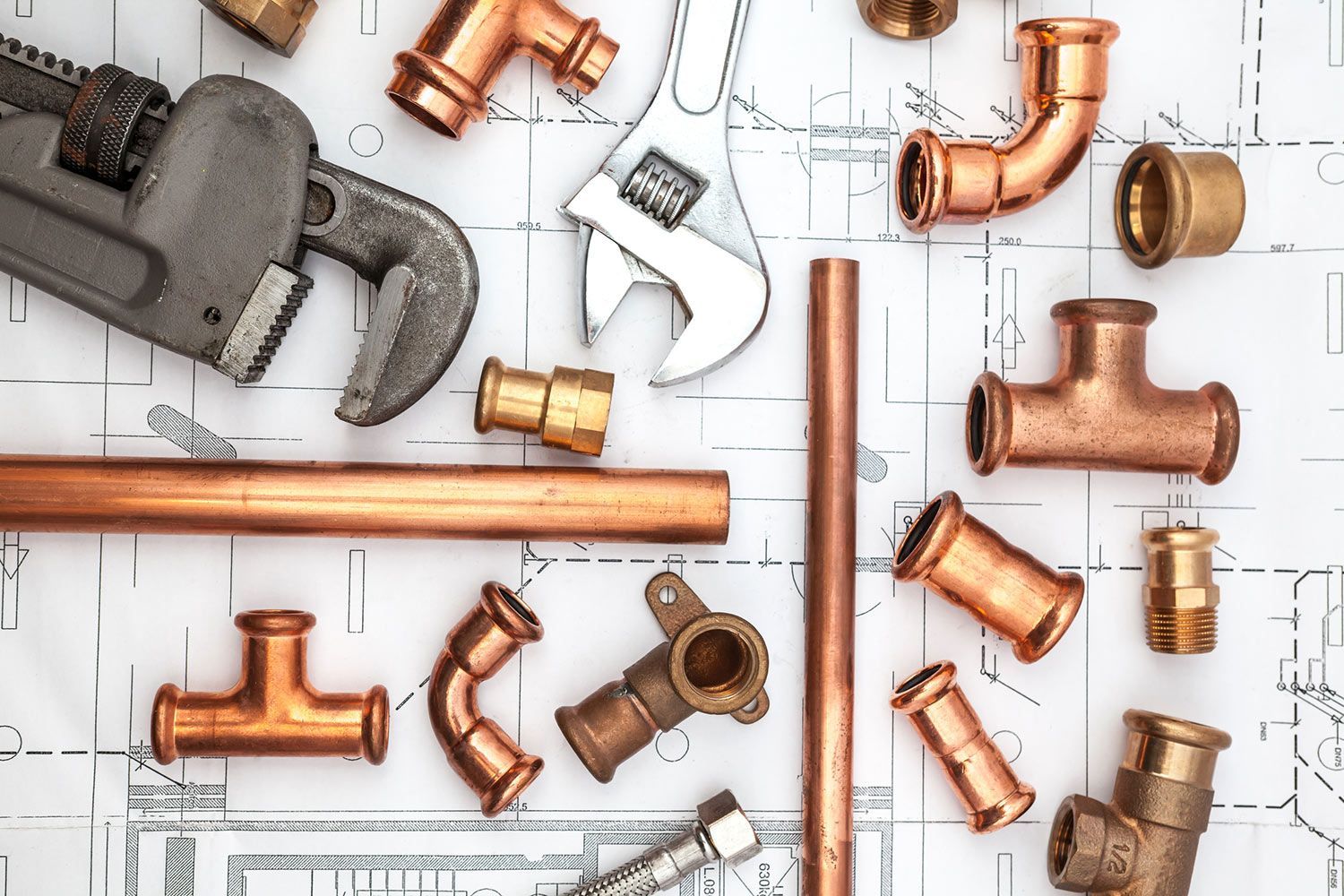
By John Gannon
•
January 28, 2025
Your plumbing system is the unsung hero of your home 🏡. From delivering hot showers 🕼 to ensuring your dishwasher runs smoothly 🛂, it works hard every day. Regular maintenance ⚖️ is the key to preventing costly repairs and keeping your system running efficiently. Here’s a comprehensive plumbing maintenance checklist to guide you through the seasons 🌞❄️. 🍃 Spring Maintenance As the snow melts and temperatures rise, it’s time to check for winter damage and prepare for the warmer months. Inspect Pipes for Leaks 🔧: Check under sinks 🎠, around appliances 🛂, and in the basement for any signs of moisture or leaks. Test Outdoor Faucets 🌬: Turn on your outdoor spigots and check for low water pressure, which could indicate a freeze-related issue. Clean Gutters and Downspouts 🌧️: Remove debris to ensure proper drainage and prevent water from pooling near your home. Check Sump Pump Functionality ⛱: Ensure your sump pump is working before spring rains arrive. 🌞 Summer Maintenance The warmer months can put extra strain on your plumbing system, especially with increased outdoor water usage. Inspect Sprinkler Systems 🌿: Look for broken or clogged sprinkler heads and adjust settings for efficiency. Check for Toilet Leaks 🚽: Add a few drops of food coloring to the tank. If color appears in the bowl after 30 minutes, you have a leak. Service Your Water Heater ☀️: Flush sediment build-up to maintain efficiency and prolong its lifespan. Monitor Water Pressure 🔄: Use a pressure gauge to ensure levels are between 40-60 psi. High pressure can damage pipes over time. 🍂 Fall Maintenance As temperatures cool, it’s time to prep your plumbing for the colder months ahead. Disconnect and Drain Outdoor Hoses ❄️: Store them away to prevent freezing and damage. Inspect Water Heater 🎧: Set the thermostat to 120°F and check the anode rod for wear. Seal Gaps 🏘: Check around pipes for gaps that could let in cold air and seal them with caulk. Test Shut-Off Valves ⚡️: Ensure all water shut-off valves are operational in case of an emergency. ❄️ Winter Maintenance Cold weather poses the greatest risk to your plumbing. Take steps to protect your pipes and appliances. Insulate Exposed Pipes 🌄: Use foam pipe insulation to prevent freezing and bursting. Keep Faucets Dripping 💧: During extreme cold, let faucets trickle to keep water moving. Check for Drafts 🏡: Ensure areas like basements and crawlspaces are well-sealed. Flush Drains ♻️: Pour a mix of baking soda 🥜 and vinegar 🥤 followed by hot water to keep drains clear. 🌍 Year-Round Maintenance Tips Consistency is key to a healthy plumbing system. Follow these tips no matter the season: Keep Drains Clear 🔍: Avoid pouring grease, coffee grounds, or other debris down the drain. Listen for Unusual Sounds 🎧: Gurgling or banging pipes can indicate a problem that needs attention. Watch Your Water Bill 💰: A sudden spike may signal a hidden leak. Schedule Professional Inspections ⚖️: Have a plumber check your system annually for peace of mind. Final Thoughts ✨ Regular plumbing maintenance doesn’t just save you money—it protects your home and ensures your daily routines run smoothly 🏡. Use this checklist to stay proactive and prevent problems before they start. Have any questions or need professional help? Reach out to Reliable Plumbing & Sewer Service today! 🔧❗
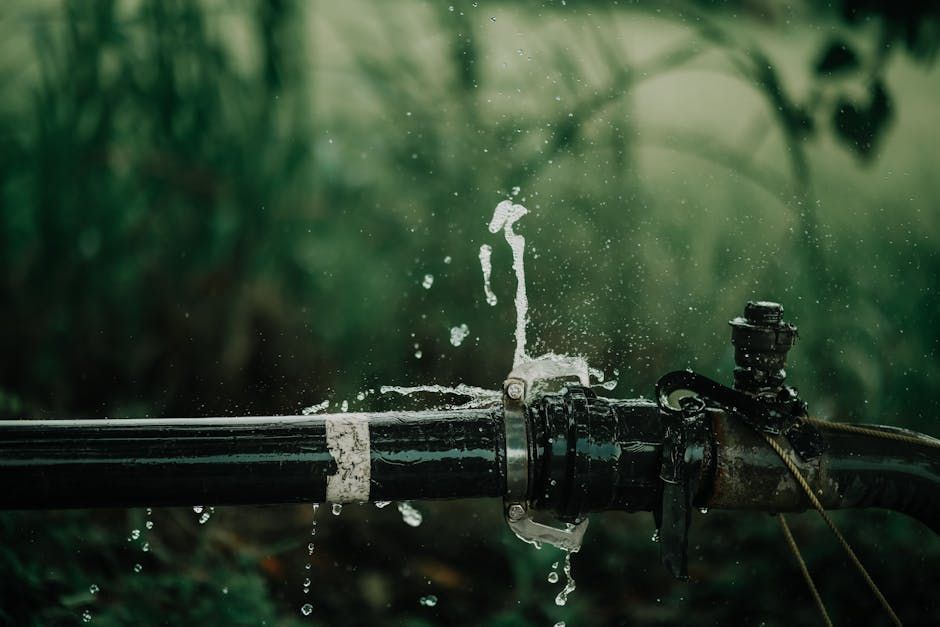
By John Gannon
•
January 14, 2025
When a plumbing emergency strikes 🚨, it can feel overwhelming. Whether it’s a burst pipe 🔧, a flooded basement 🌊, or a stubborn clog 🗊7, knowing what to expect can ease your stress. Here’s a step-by-step breakdown of what happens during a plumber’s service call, from the initial contact to the final fix. ☎️ Step 1: Initial Call When you call a plumber, the first step is to explain your issue clearly. Provide details like: * Where the problem is 🏡 * How long it’s been happening ⏳ * Any temporary fixes you’ve tried ✍️ What to Expect: Our plumber or team will ask questions to assess the urgency and determine the best approach. For emergencies, we’ll prioritize your call ⚡️. 🏢 Step 2: Arrival and Assessment Once our plumber arrives, he will inspect the situation thoroughly 🕵♂️. This involves: * Locating the source of the problem 🏙 * Checking surrounding areas for hidden damage 🌀 * Explaining the issue and potential solutions 💬 What to Expect: Sometimes plumbers use specialized tools ⚙️, like moisture meters and inspection cameras 🎥, to diagnose the problem accurately. ⚖️ Step 3: Providing an Estimate Before starting any work, the plumber will give you an estimate 💰. This typically includes: * The cost of labor ⌛ * Necessary parts or materials 🧰 * An estimated timeline for the repair ⏳ What to Expect: Clear communication is key. Reputable plumbers will ensure you understand the costs and scope of work before proceeding. 🔧 Step 4: Repairs in Action Now it’s time to fix the issue! Plumbers may use a variety of tools and techniques, such as: * Wrenches 🛠️ to tighten or replace parts * Drain snakes 🔍 to clear clogs * Sealants and soldering tools ⚖️ for pipe repairs What to Expect: Depending on the problem’s complexity, repairs might take anywhere from 30 minutes to several hours ⏳. 🕵♂️ Step 5: Final Inspection and Clean-Up After completing the repair, our plumber will: * Test the system to ensure everything is working 🎦 * Check for leaks or remaining issues ❌ * Clean up the work area 🧹 What to Expect: A professional plumber leaves your home as clean as they found it 🏡, so you can enjoy peace of mind 😌. 🛠️ Step 6: Tips for Prevention Before leaving, many plumbers offer advice on preventing future issues, such as: * Regular maintenance tips ✅ * Signs to watch for 🔎 * Recommendations for upgrades 🏙 What to Expect: This proactive guidance can save you time and money in the long run 💸. Final Thoughts ✨ Calling Reliable Plumbing & Sewer Service during an emergency doesn’t have to be stressful. By understanding the process, you can stay informed and confident every step of the way. Remember, we are here to solve the problem and ensure your home stays safe and functional 🏡. Have questions about plumbing emergencies? Give us a call 🔧❗

By John Gannon
•
January 7, 2025
A clogged drain 🗊7 can quickly disrupt your day, leaving you searching for a fast solution. Unfortunately, not all advice out there is sound. In fact, some so-called remedies can do more harm than good. In this blog, we’ll explore common drain cleaning myths, reveal what works, and explain why professional help is sometimes the best option. 🔥 Myth 1: Boiling Water Fixes Everything ✨ The Myth: Pouring boiling water 🔥 down the drain will clear any clog. 🔎 The Truth: While boiling water can help dissolve grease 🥃 or soap residue in metal pipes, it’s not a cure-all. For PVC pipes, the high temperature can actually cause damage, softening or warping the material over time. Boiling water is ineffective against stubborn blockages caused by hair 💇♀️, food particles 🍲, or other debris. 💡 What Works: Use hot (not boiling) water 💧 along with dish soap 🧶 to tackle grease build-up. For tough clogs, a plunger ⚒️ or drain snake 🔍 is more effective. ⚖️ Myth 2: Chemical Drain Cleaners Are the Best Option ✨ The Myth: Chemical drain cleaners 🪽 are a quick and easy fix for any clog. 🔎 The Truth: While these cleaners may dissolve minor blockages, they often cause more problems than they solve. The harsh chemicals can erode pipes 🌀, especially older ones, leading to costly repairs. Additionally, they’re harmful to the environment 🌱 and can create hazardous fumes 💨 if mixed with other substances. 💡 What Works: Opt for enzymatic cleaners 🥛 that break down organic matter without damaging your plumbing. For severe clogs, call a professional plumber ⚙️ to assess the issue. 🔧 Myth 3: A Wire Hanger Works Just Like a Drain Snake ✨ The Myth: Straightening a wire hanger 🛃 is a DIY alternative to a professional drain snake. 🔎 The Truth: While a wire hanger might help dislodge hair or small debris near the surface, it’s not designed for deep clogs. It can scratch or puncture your pipes, causing more damage in the long run. 💡 What Works: Invest in a proper drain snake 🔍 or auger, which is specifically designed for clearing deeper blockages without harming your pipes. ♻️ Myth 4: Bleach Clears Clogged Drains ✨ The Myth: Pouring bleach 🪸 down your drain will remove clogs and sanitize the pipes. 🔎 The Truth: Bleach is a powerful cleaner and disinfectant, but it’s not designed to break down blockages. It can also react with other substances in your pipes, creating harmful fumes 💨. 💡 What Works: Instead of bleach, try a mixture of baking soda 🥜 and vinegar 🥤 followed by hot water 💧. This eco-friendly solution can help break down minor clogs without introducing toxic chemicals. ⏳ Myth 5: Clogs Will Eventually Clear Themselves ✨ The Myth: Given enough time, most clogs will break down and flow away on their own. 🔎 The Truth: Ignoring a clog often makes the problem worse. Over time, debris can accumulate, leading to a complete blockage or even pipe damage 💢. Slow-draining water is a sign that action is needed sooner rather than later. 💡 What Works: Address slow drains immediately with simple methods like plunging ⚒️ or using an enzymatic cleaner 🥛. If the problem persists, it’s time to call in a professional ⚙️. 🔧 When to Call a Plumber Some drain issues require expert intervention. Here are signs it’s time to call a plumber 🔢: * Multiple drains are clogged simultaneously ⛔️. * There’s a foul odor coming from the drains 💥. * Water backs up into sinks, tubs, or toilets 🚰. * DIY methods haven’t worked 🚫. A professional plumber has the tools ⚙️ and expertise to diagnose and resolve complex drain problems safely and effectively. 🎡 Final Thoughts Not all drain-cleaning advice is created equal. By understanding what works and what doesn’t, you can avoid common pitfalls and keep your plumbing in top shape 🌍. For persistent issues, don’t hesitate to contact a trusted professional—it’s an investment in the long-term health of your plumbing system ⚖️. Have a question about your drain? 🔧 Share your concerns in the comments, and we’ll help guide you to the best solution! 🙏

By John Gannon
•
December 26, 2024
As the holidays wind down and the new year begins, it’s time to take a closer look at your home’s plumbing. The festive season can put extra stress on your plumbing system, with large gatherings, extra cooking, and more frequent use of sinks, toilets, and drains. Here are some essential plumbing tips and advice to keep your home’s system running smoothly and avoid costly repairs. 1. Clear Your Drains One of the most common post-holiday plumbing issues is clogged drains. Grease, food scraps, and soap residue from holiday meals often build up in your kitchen sink. Using a drain cleaner or calling for a professional drain cleaning service can ensure your pipes stay clear and functional. Pro Tip: Avoid pouring grease down the sink in the first place. Instead, let it solidify and dispose of it in the trash. 2. Check for Leaky Faucets Leaky faucets might seem minor, but they can waste a significant amount of water over time and increase your water bill. Inspect your kitchen and bathroom faucets for drips and fix them promptly. A quick repair can save you both water and money. 3. Inspect Your Water Heater With extra hot water usage during the holidays, your water heater may have been working overtime. If you notice inconsistent water temperatures or strange noises, it might be time for a water heater tune-up or even a replacement. Flushing the tank to remove sediment buildup can improve efficiency and extend the life of your unit. 4. Watch Out for Toilet Troubles Toilets often see more use during the holiday season, leading to potential clogs. If your toilet is flushing slower than usual or making unusual sounds, it’s time to check for blockages. A plunger can resolve minor issues, but recurring problems may require a professional plumber to inspect the sewer line. 5. Inspect Your Garbage Disposal Holiday cooking can take a toll on your garbage disposal. Bones, fibrous vegetables, and coffee grounds are common culprits for disposal clogs and damage. If your garbage disposal isn’t functioning properly, reset it or call for a garbage disposal repair. Pro Tip: Always run cold water while using the disposal to help break down food particles. 6. Look for Signs of Pipe Damage Winter temperatures can cause pipes to freeze and crack. Inspect exposed pipes for leaks, condensation, or visible damage. Insulating your pipes and leaving cabinet doors open in colder areas can prevent freezing during extreme weather. 7. Schedule a Professional Plumbing Inspection The new year is a perfect time to schedule a professional plumbing inspection. A licensed plumber can identify potential problems early, from hidden leaks to aging fixtures, saving you from unexpected emergencies later. 8. Upgrade Your Fixtures Thinking about a home improvement project? Upgrading old faucets, showerheads, or toilets to water-efficient models can reduce water usage and give your home a fresh look. Search for "low-flow fixtures" or "water-saving plumbing upgrades" for eco-friendly options. Final Thoughts By taking care of your plumbing after the holidays, you can start the new year with peace of mind. Whether it’s a quick DIY fix or a call to a professional plumber, proactive maintenance will keep your home running smoothly. For more plumbing tips or to schedule a service, contact Reliable Plumbing, your local plumbing experts today.
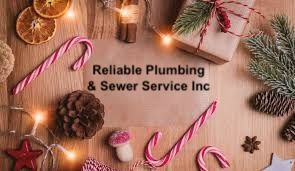
By John Gannon
•
December 18, 2024
The holiday season is upon us—a time filled with cheer, gatherings, and the warm glow of festive lights. But amidst all the joy, one thing can quickly turn merry moments into a headache: unexpected plumbing problems. With a little preparation, you can ensure your celebrations stay stress-free. Here's why giving your plumbing a check-up now is a smart move: 🎅 Prevent Holiday Disasters Imagine hosting a beautiful Christmas dinner, complete with a table laden with delicious dishes and the sound of laughter filling the air—only to have the festivities interrupted by a clogged drain or a leaky faucet. Not exactly part of the holiday plan, right? Proactive plumbing maintenance can help you avoid these unpleasant surprises, ensuring your celebrations go off without a hitch. 💸 Save on Emergency Costs The holiday season is a busy time for plumbers, and emergency services can come with a hefty price tag. By addressing potential issues now, you can sidestep the stress and expense of last-minute repairs. Your wallet will thank you! 🎁 Protect the Holiday Magic Water damage from leaks doesn’t just threaten your home—it can also ruin cherished decorations and carefully chosen gifts. By handling plumbing concerns early, you’re safeguarding the magic of the season and ensuring your home remains a festive haven. ⏳ Enjoy Worry-Free Celebrations Picture this: a cozy Christmas morning, the smell of freshly baked treats, and the joy of uninterrupted family time. By taking care of plumbing maintenance ahead of time, you’re setting the stage for a holiday season free from unexpected interruptions. Call a Trusted Plumber Today This holiday season, give yourself the gift of peace of mind. Reach out to a trusted, family-owned plumbing service and let them help you prepare for a stress-free celebration. Your pipes—and your holidays—will thank you! 💖 Stay merry, stay bright, and keep your home running smoothly. Happy holidays! 🎄
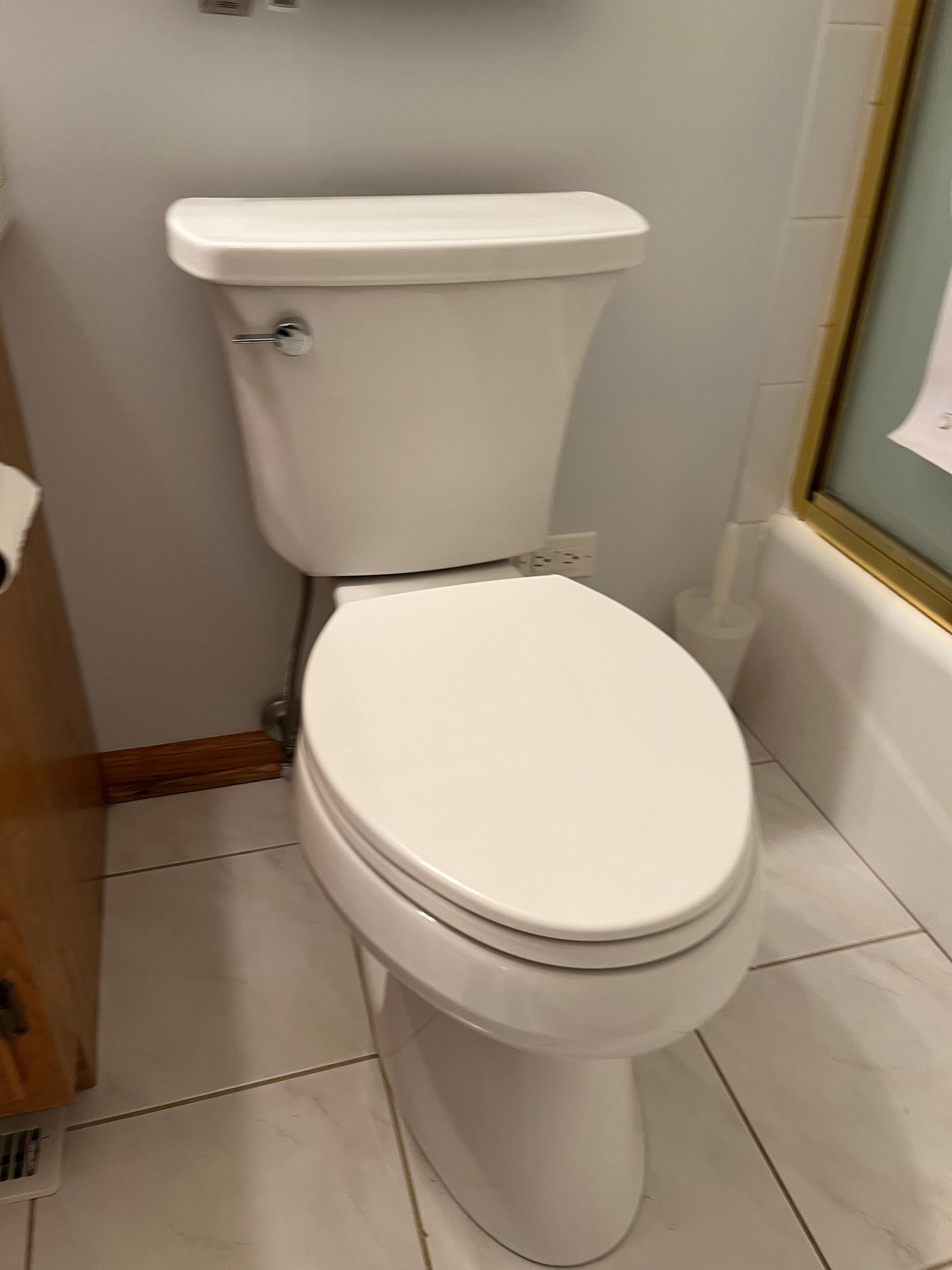
By John Gannon
•
December 11, 2024
When it comes to maintaining your home’s plumbing system, you need a team you can trust. At Reliable Plumbing and Sewer Service Inc., we specialize in a range of services to keep your home running smoothly: ✅ Toilet Repairs: Say goodbye to leaks, clogs, and other issues.
✅ Faucet Fixes and Installations: From drips to stylish upgrades, we’ve got you covered.
✅ Sump and Ejector Pump Setups: Protect your home from water damage with reliable installations.
✅ Sewer Clean-Outs and Repairs: Keep your sewer system flowing without hiccups. Why Choose Professional Help? Plumbing isn’t just about fixing pipes—it’s about precision and expertise. Even small errors can lead to expensive problems down the line. What might seem like a quick DIY fix can mask deeper issues, creating a domino effect of costly repairs. ✨ That’s where we come in! At Reliable Plumbing and Sewer Service Inc., our skilled team ensures every job is done right the first time. We bring the right tools, extensive experience, and a commitment to quality to every project we handle. The Reliable Difference From the moment you call us, you’ll notice the difference:
💪 Professionalism: We respect your time and your home.
🎯 Expertise: Our team tackles complex plumbing challenges with ease.
🏡 Care: We treat your home as if it were our own. Don’t let plumbing problems snowball into costly headaches. Choose the safe, efficient, and dependable solution—Reliable Plumbing and Sewer Service Inc.! 📞 Call us today to schedule your service and experience what sets us apart. Your home deserves nothing less than the best! 💧✨
BROWSE OUR WEBSITE
CONTACT INFORMATION
Email: reliableplmg@att.net
Address: Tinley Park, IL
State of Illinois Contractor's License # 055-020192
Content, including images, displayed on this website is protected by copyright laws. Downloading, republication, retransmission or reproduction of content on this website is strictly prohibited. Terms of Use
| Privacy Policy
